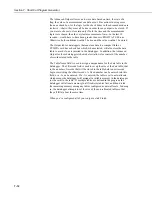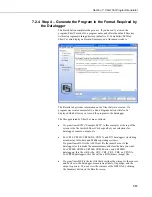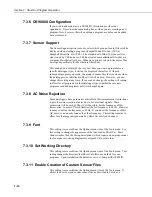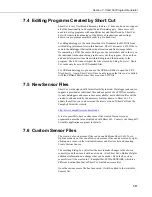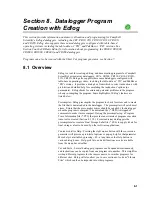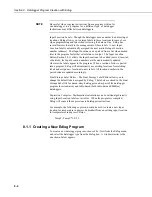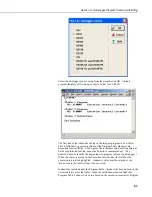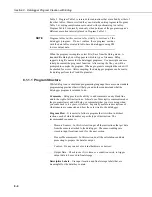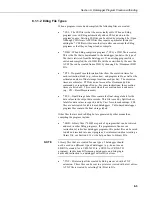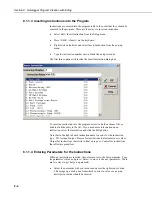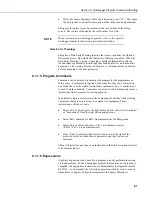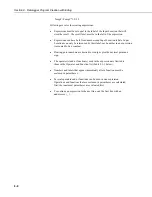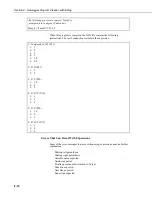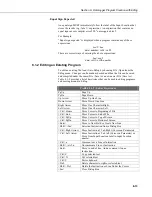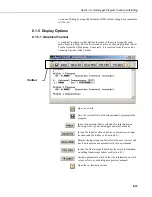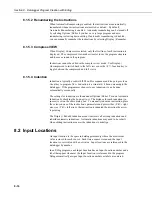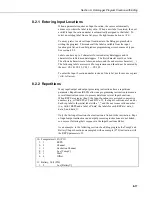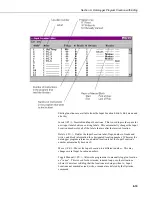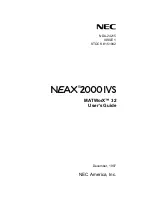
Section 8. Datalogger Program Creation with Edlog
8.1.1.2 Edlog File Types
When a program is saved and compiled, the following files are created:
•
*.CSI – The CSI file is what the user actually edits. When an Edlog
program is saved, Edlog automatically adds a CSI extension to the
program's name. Existing CSI files can be edited by selecting File | Open.
Although CSI files are ASCII files they require a particular format, so
editing the *.CSI files with some other text editor can corrupt the Edlog
programs so that they no longer load or compile.
•
*.DLD – When Edlog compiles a program (*.CSI), a .DLD file is created.
This is the file that is downloaded to the datalogger, (and also the type of
file that is retrieved from the datalogger). If an existing program file is
edited and compiled, the old DLD file will be overwritten by the new file.
A CSI file can be created from a DLD by choosing File | Document DLD
File.
•
*.PTI – Program Trace Information files show the execution times for
each instruction, block (e.g., subroutine), and program table, as well as the
estimated number of final storage locations used per day. The execution
times are estimates. PTI files do not account for If commands, Else
commands, or repetitions of loops. For some instructions, the execution
times are listed as 0. This occurs when the execution time is unknown
(e.g., P23 – Burst Measurement).
•
*.FSL – Final Storage Label files contain the final storage labels for the
data values in the output data records. This file is used by Split to show
labels for data values in reports, and by View for column headings. FSL
files are not created for table-based dataloggers. Table-based datalogger
program files contain the final storage labels.
Other files that are used in Edlog but are generated by other means than
compiling the program include:
•
*.LBR - Library files (*.LBR) are parts of a program that can be retrieved
and used in other Edlog programs. If a programmer often uses an
instruction set in his/her datalogger programs, this partial file can be saved
to disk and inserted into a new program. For information about creating a
library file, see Section 8.1.3 or the help on Save to Library File.
Library files that are created for one type of datalogger should
not be used in a different type of datalogger (e.g., do not use an
LBR file created for a CR10X-TD in a CR10X or CR510-TD
program). Instructions differ among dataloggers, and bringing in
an invalid instruction to a datalogger will result in errors.
NOTE
•
*.TXT - Printer output files created by Edlog are saved with a TXT
extension. These files can be sent to a printer or viewed with a text editor.
A TXT file is created by selecting File | Print to File.
8-5
Summary of Contents for PC400
Page 2: ......
Page 16: ...Section 1 Introduction 1 6...
Page 18: ...Section 2 System Requirements 2 2...
Page 46: ...Section 4 The PC400 Main Screen 4 24...
Page 49: ...Section 5 Split 5 3...
Page 82: ...Section 5 Split 5 36...
Page 114: ...Section 6 View 6 14...
Page 132: ...Section 7 Short Cut Program Generator 7 18...
Page 188: ...Section 9 Datalogger Program Creation with CRBasic Editor 9 30...
Page 230: ...Appendix B Table Based Dataloggers B 12...
Page 249: ......




